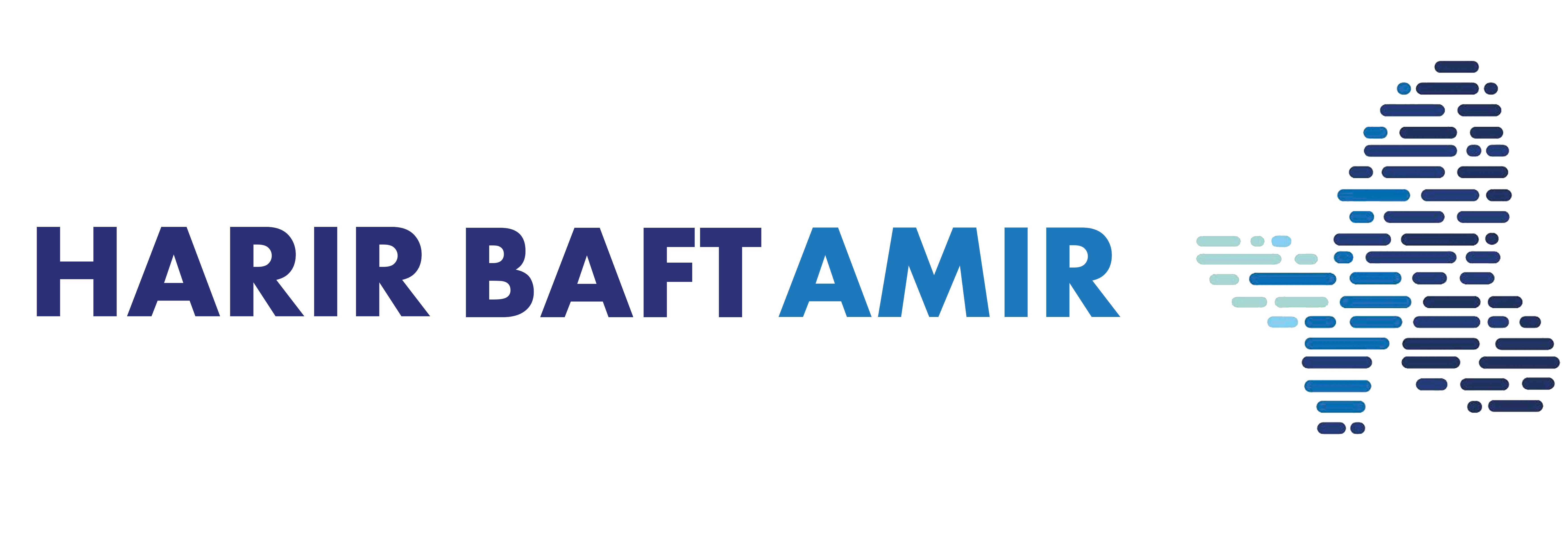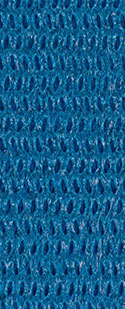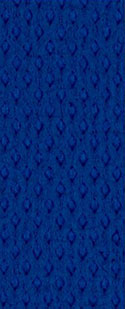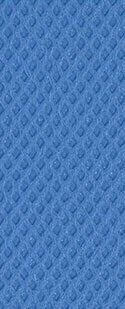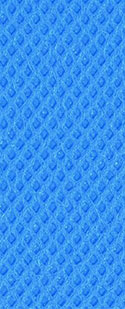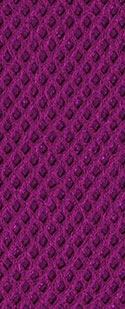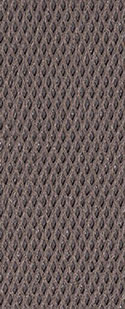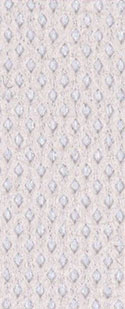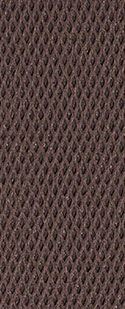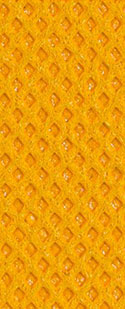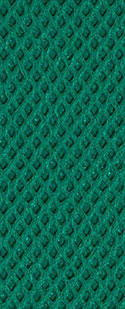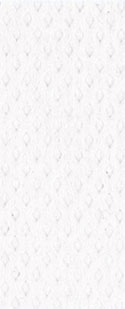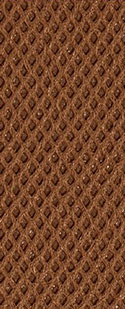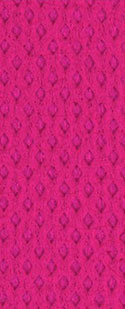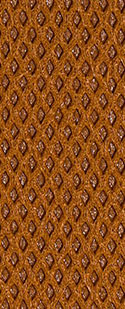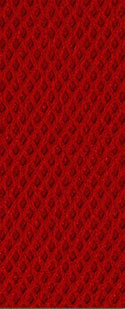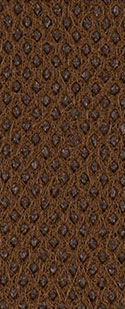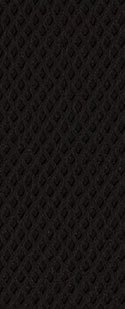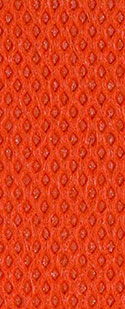
Melt blown fabric
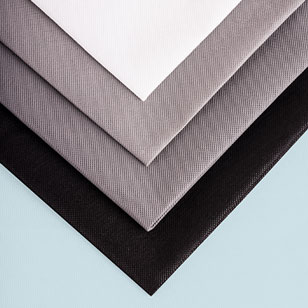
Melt blown fabric
share
Nonwoven textiles are made from polypropylene, consisting of extended filaments produced through a special and unique process. This product boasts high strength, uniformity, and an economical price, making it suitable for various applications.
Melt blown is one of the methods used to manufacture nonwoven textiles, and it is widely used in the Harir Baft Amir Company. This method creates fabrics with delicate and densely packed fibers, capable of absorbing high humidity, making it particularly popular in hygienic products and filtration applications.
Specifications
- Grammage 20-90
- Capability to tolerate the weight up to 15 times
- Maximum width of fabric 320
Product color qualities
Expenses Melt blown fabric
- Hygienic and cellulosic
- Medical usage
- Industrial
- Agriculture
- Filtration

The name melt blown may not be familiar to some individuals while they daily deal with its various products, and it is typically considered as a part of the people’s needs. In fact, this product is a family of spunbond used as a filter.
This type of fabric is of nonwoven textiles. Its material is soft and impenetrable (anti-humidity), consisting of discontinuous filaments of various lengths which are connected together by thermal, mechanical, and chemical processes, and having delicacy of 1 to 5 microns, which are produced using the newest and latest day technology.
The most common use of melt-blown fabric is in medical and health usages, and the most important product of which is medical masks, which with the outbreak of corona disease, the use of masks increased, and more need for this product was felt. The Cellulose equipment is also used in health products, constituents of which are natural raw materials that are harmless to the environment.
Study suggestion: combined composite of melt blown and spunbond
Cellulose exists in the cotton threads and is used in the cellulose garment. It is used in the paper and cardboard industry, feeding livestock, and most importantly and common in health usage.
Most important feature of melt-blown:
This type of nonwoven fabric is introduced as the most widely used product in hygienic and cellulosic equipment due to its resistance to humidity. Some of the important features of this model of fabric can be stated as follows:
-Having high resistance, which is not easily torn and frayed.
-it is soft and light so that it can be daily used without damaging the body.
-Having high absorption and impenetrable layer due to the empty space among the textures.
-Capability to recycle and having a structure proportional to the environment such as cellulose materials.
-No disorder in breathing and easy passage of oxygen through the melt-blown texture.
-Resistant to heat and fire
-High flexibility and stretch
Melt blown applications:
-Cellulose industries: Elderly incontinence pads, sanitary napkins, and baby napkins.
-All cleaner, sanitary, and cosmetic napkins
-Medical usages: surgical and normal gloves, disposable gowns and clothes, and surgical curtains
-Domestic usages: spring fabric, bedsheet, antimacassar, furniture cover, and car cover.
-Safety at work: protective clothes, gas masks, and thermal insulators made from melt blown.
-Electronic equipment: linear fiber in flappy disks of computer and insulator in a capacitor.
-Oil absorber in the power plants industry
About the usage of melt-blown
These days, the usage of cellulose and sanitary products has increased due to the observation of sanitary principles and the importance of people’s health. Melt- blown fabrics are also part of these products which are paid attention to by people in each age group due to the cheapness and ease of use. Moreover, the usage and variety of this product meet the people’s needs in each field and cause their satisfaction.
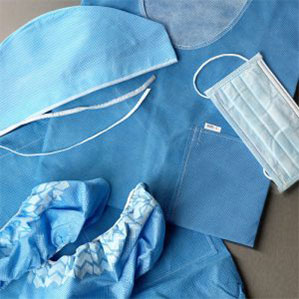
The Use of Nonwoven Fabric in Medical Applications
Nonwoven fabric, as one of the types of textiles with or without weaving, is highly regarded among fabrics. This fabric has gained significant importance and influence in the textile industry due to its unique and remarkable properties, making it irreplaceable.
Nonwoven fabric has been around for nearly a century. It was first used in reputable American companies in the 1940s for producing fiberglass wool. Since then, the production process of these nonwoven textiles has undergone gradual changes, eventually incorporating polymer compounds in their processing.
Nonwoven textiles are made in various forms. They exhibit a wide range of diversity, including different weights or grams, variable lengths and widths in roll bands, diverse color options, various cutting methods, and high efficiency.
Today, numerous diseases are emerging due to modernization, increased anxiety, viral outbreaks (such as influenza and coronavirus), and unhealthy lifestyles (obesity, tobacco and alcohol consumption, lack of exercise, and poor nutrition). These conditions necessitate more medical care, utilization of medical services, and medical products than ever before.
Moreover, relying solely on natural materials in medical applications does not meet the demands of society. Therefore, nonwoven industrial fabrics have become substitutes for natural textiles, finding their major application in the medical field. For instance, they are extensively used in the production of respiratory and surgical masks, often made from high-quality multilayer nonwoven fabric.
Hospital nonwoven fabrics come in sizes of 160, 100, and 120, with a weight range starting from 16 grams and above. The weight of hospital nonwoven fabrics used in bed sheets, hygiene underpads, and operating rooms varies from 20 to 110 grams, with some going even higher with a multiplier of 5. Additionally, these medical nonwoven fabrics typically weigh between 30 to 60 grams.
Applications of nonwoven fabric in medical use include:
1. Hygiene under pads
2. Blankets and underlays
3. Patient gowns
4. Gowns and surgical attire
5. Single-use hats and masks
6. Hospital pads, gauze, bandages, and wound dressings
7. Hygiene and hospital layers
8. Hydrophilic (water-friendly) and water-proof covers
9. Medical staff uniforms (nurses)
Specifications of nonwoven fabric for medical applications are not provided in the text. If you need more specific information about the specifications, please let me know, and I'll be happy to assist further.
The Use of Melt Blown in Medical Applications
Melt Blown, as one of the types of textiles with or without weaving, is highly regarded among fabrics. This fabric has gained significant importance and influence in the textile industry due to its unique and remarkable properties, making it irreplaceable.
Nonwoven fabric has been around for nearly a century. It was first used in reputable American companies in the 1940s for producing fiberglass wool. Since then, the production process of these nonwoven textiles has undergone gradual changes, eventually incorporating polymer compounds in their processing.
Nonwoven textiles are made in various forms. They exhibit a wide range of diversity, including different weights or grams, variable lengths and widths in roll bands, diverse color options, various cutting methods, and high efficiency.
Today, numerous diseases are emerging due to modernization, increased anxiety, viral outbreaks (such as influenza and coronavirus), and unhealthy lifestyles (obesity, tobacco and alcohol consumption, lack of exercise, and poor nutrition). These conditions necessitate more medical care, utilization of medical services, and medical products than ever before.
Moreover, relying solely on natural materials in medical applications does not meet the demands of society. Therefore, nonwoven industrial fabrics have become substitutes for natural textiles, finding their major application in the medical field. For instance, they are extensively used in the production of respiratory and surgical masks, often made from high-quality multilayer nonwoven fabric.
Hospital nonwoven fabrics come in sizes of 160, 100, and 120, with a weight range starting from 16 grams and above. The weight of hospital nonwoven fabrics used in bed sheets, hygiene underpads, and operating rooms varies from 20 to 110 grams, with some going even higher with a multiplier of 5. Additionally, these medical nonwoven fabrics typically weigh between 30 to 60 grams.
Applications of Melt Blown fabric in medical use include:
1. Hygiene underpads
2. Blankets and underlays
3. Patient gowns
4. Gowns and surgical attire
5. Single-use hats and masks
6. Hospital pads, gauze, bandages, and wound dressings
7. Hygiene and hospital layers
8. Hydrophilic (water-friendly) and water-proof covers
9. Medical staff uniforms (nurses)
Specifications of Melt Blown Fabric in Medical Use
Melt Blown fabric has extensive applications in the medical and healthcare sectors, with one of its significant features being its antibacterial property, providing safety conditions for the user. The production cost of this fabric is low, and it is easily recyclable. This nonwoven fabric is also UV-resistant and has a soft, lightweight, gentle, and flexible texture.
Water repellency and water friendliness are other prominent characteristics of Melt Blown fabric, giving rise to various functionalities in hospital and medical uses. Moreover, it prevents sensitization and infectious diseases.
Conclusion regarding the Application of Melt Blown Fabric in Medical Use
Throughout the day, numerous individuals come into contact with Melt Blown fabric, including its applications in medical and hospital settings. This fabric plays a crucial role in preventing communicable diseases and post-surgical infections, significantly contributing to the improvement and promotion of community health and hygiene.
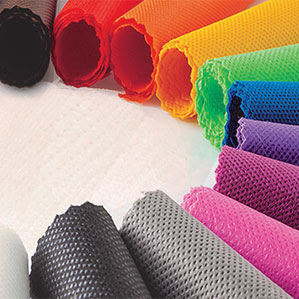
Applications of Melt Blown Fabric in the Industrial Sector
Melt Blown fabric is a crucial component in advancing and improving the quality of various industrial applications. This type of nonwoven fabric, produced using nanotechnology primarily consists of polymer compounds, and it has rapidly replaced natural textiles.
The progress and excellence in fields such as physics, chemistry, biology, medicine, pharmaceuticals, mechanical engineering, and electronics have led to significant advancements in industrial technologies. Melt Blown fabric is one of the novel products in industrial applications, bringing about fundamental and transformative changes in the industry due to its high efficiency and quality.
Today, the performance and efficiency of nonwoven fabrics surpass natural textiles. The production of Melt Blown fabric utilizes modern equipment and advanced technology, making it suitable for various industrial products with different capabilities and objectives.
In the process of producing nonwoven fabric, the raw materials are initially fed into an extruder machine. After melting, polypropylene enters a reservoir of needles, shaped like syringes, and the pressure from the extruder causes the molten material to form extremely fine fibers and filament strands.
These filaments, after cooling, are pulled onto conveyor belts in the production line, creating layers of spunbond fabric that are simultaneously bonded with Melt Blown layers. Mechanical, chemical, and thermal methods are employed in this process, enhancing the fabric's tensile strength, impermeability, and durability.
Melt Blown fabrics are manufactured with different diameters and weights. In essence, the process of producing nonwoven fabrics, like spunbond and felt, results in fabrics without weaving.
Applications of Melt Blown Fabric in Various Industries
1. Construction Industry: Precast walls, flooring, formwork, soil stabilization, road construction, building wraps, wallpaper, building facades.
2. Agricultural Sector: Greenhouse covers, field covers, water-saving irrigation, flower and seedling protection.
3. Filtration Industry: Industrial filters, air and water purification systems, surgical masks, oil and gas filters.
4. Medical and Healthcare: Patient and surgical gowns, hygiene and cosmetic wipes, sanitary pads, diapers, mattress protectors.
5. Packaging Industry: Electrical and digital devices, furniture, food products, clothing and shoe covers, thermal insulation, electrical insulation.
6. Automotive Industry: Car interior decorations, car covers, paint lines, sound insulation, car body components.
Advantages of Melt Blown Fabric in Industrial Applications
- Chemical and Physical Stability
- High Strength and Tensile Properties
- Cost-Effectiveness
- High Resistance to Heat and Temperature
- UV Resistance
- Impermeability
- Eco-friendly Compatibility
- Antibacterial Properties (in food industries)
- High Flexibility
- High Efficiency and Durability
In conclusion, with the advancement of science and the industrialization of societies, the use of modern equipment and technology is continuously increasing and improving. Melt Blown fabric, with its impermeability and high flexibility, has brought transformative changes in various industrial applications, reducing the damages caused by modernity.
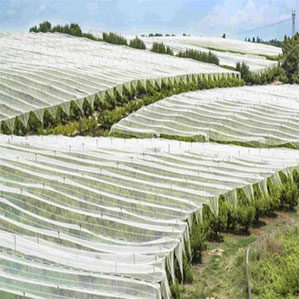
Applications of Melt Blown Fabric in Various Industries
1. Construction Industry: Precast walls, flooring, formwork, soil stabilization, road construction, building wraps, wallpaper, building facades.
2. Agricultural Sector: Greenhouse covers, field covers, water-saving irrigation, flower and seedling protection.
3. Filtration Industry: Industrial filters, air and water purification systems, surgical masks, oil and gas filters.
4. Medical and Healthcare: Patient and surgical gowns, hygiene and cosmetic wipes, sanitary pads, diapers, mattress protectors.
5. Packaging Industry: Electrical and digital devices, furniture, food products, clothing and shoe covers, thermal insulation, electrical insulation.
6. Automotive Industry: Car interior decorations, car covers, paint lines, sound insulation, car body components.
Advantages of Melt Blown Fabric in Industrial Applications
- Chemical and Physical Stability
- High Strength and Tensile Properties
- Cost-Effectiveness
- High Resistance to Heat and Temperature
- UV Resistance
- Impermeability
- Eco-friendly Compatibility
- Antibacterial Properties (in food industries)
- High Flexibility
- High Efficiency and Durability
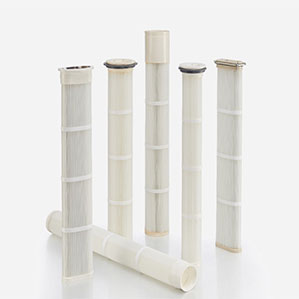
Applications of Melt Blown Fabric in Filtration
Melt Blown fabric is a type of nonwoven fabric (spunbond) that belongs to the category of fabrics without weaving (nonwoven) and is produced through a process that converts resin fabric into nonwoven fibers. Melt Blown has two main differences from spunbond: one is in the temperature and air used to thin the fibers and filaments, and the other is the amount of force used to draw and thin the filaments.
The raw material for this type of fabric is a thermoplastic synthetic material formed by an extruder with numerous fine nozzles that melt the material and, upon exiting the nozzles, the separated filaments explode at a hot temperature, producing very fine and unlimited fibers in a matter of seconds.
This type of fabric has various applications, such as in medical, hygiene, agricultural, and industrial uses. Its most common application is in filters and purifiers used for liquid filtration or air purification. For example, air purifiers in subways and industrial and polluted areas have been improved with the use of Melt Blown, resulting in cleaner and purified air.
Nonwoven fabrics with filtration properties have excellent resistance to high temperatures, making them a quick replacement for natural materials like paper, glass, carbon, and fabrics with natural fibers. Significant progress has been made in the field of industry and medicine through filtration, meeting society's need for clean and drinkable water and clean air, providing respiratory and digestive health benefits.
Benefits of using Melt Blown in Filtration:
1. Removal of various pollutants from water, such as bacteria, viruses, metals, minerals, etc.
2. Consistency and flexibility in filtration
3. High tensile and impact resistance
4. High efficiency and productivity
5. Chemical resistance
6. High durability
7. High air permeability
8. Fire and heat resistance
9. Oil and grease absorption
10. Energy cost reduction
Melt Blown Fabric Technology in Filtration:
1. Delicate and thin fibers produced through melting
2. Medium and heavy fabrics through needle punching
3. Non-permeable products through wet-laid process
4. Strengthening through water utilization
5. Thermal bonding for heat resistance
Applications of Melt Blown in Filtration:
1. Surgical masks
2. Cleanroom filters (cartridge filters)
3. Water purifiers
4. Air purifiers
5. Industrial filters
Conclusion:
In today's industrialized societies with air and water pollution, there is a fundamental need for clean and pure air and water. To address this issue, filtration and purification devices have been developed to prevent respiratory and digestive diseases. Melt Blown fabrics have contributed significantly to this field due to their filtration capabilities.
Start a conversation
Hello ! Click on a member below and chat.